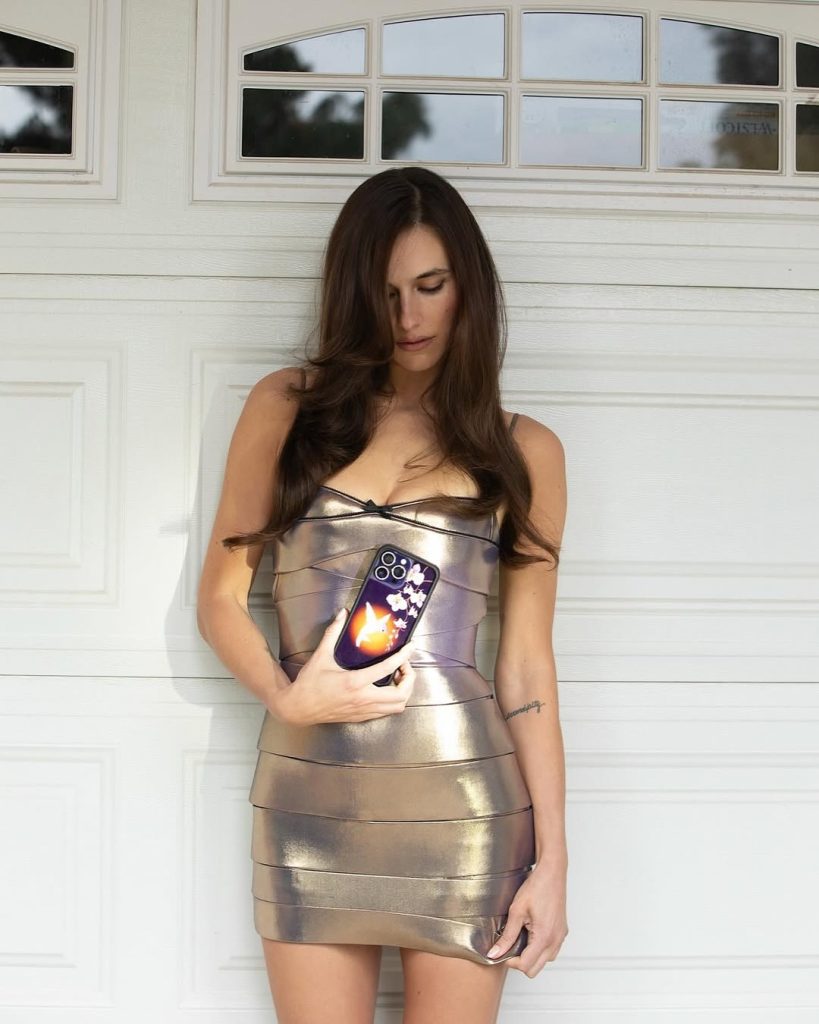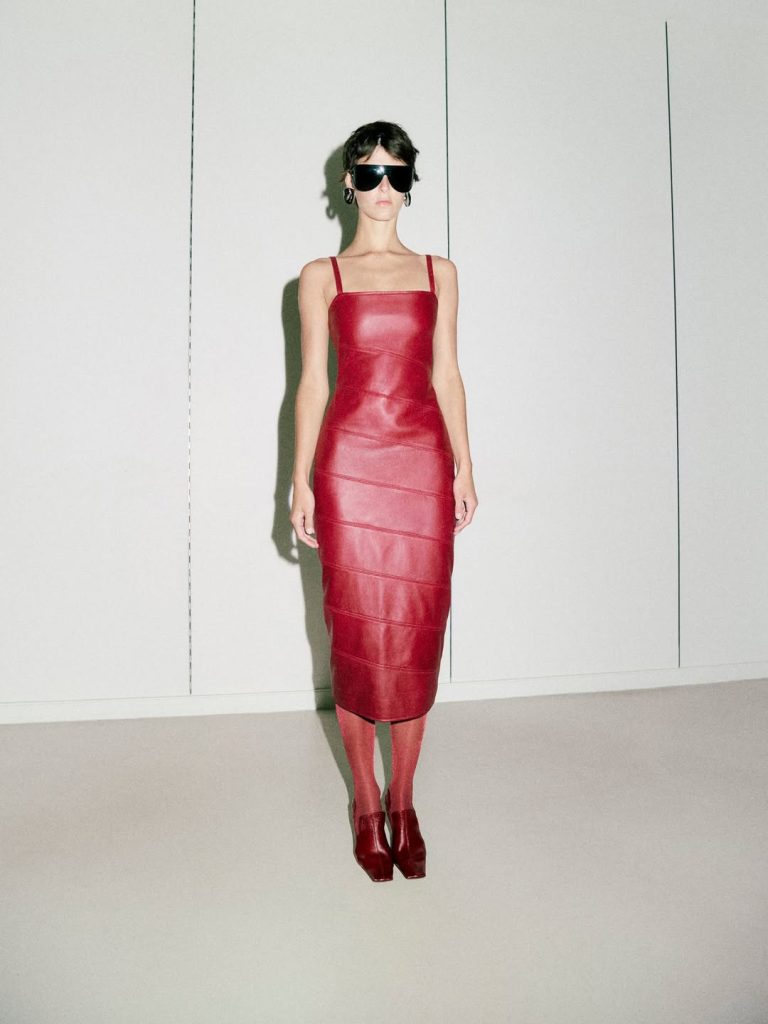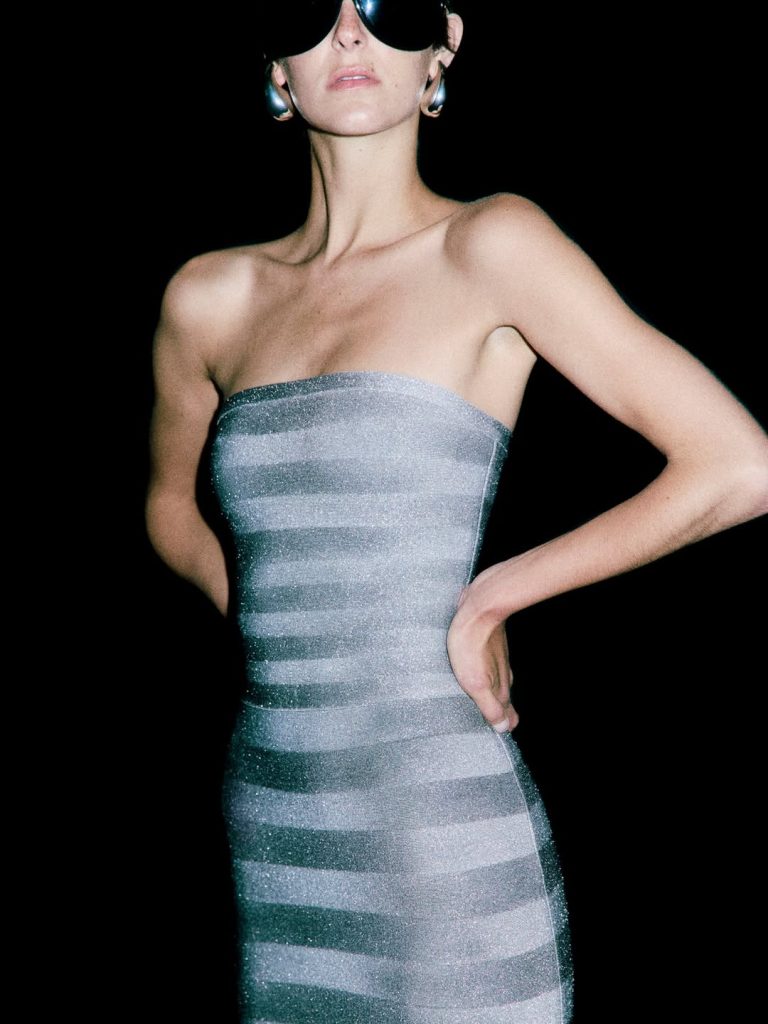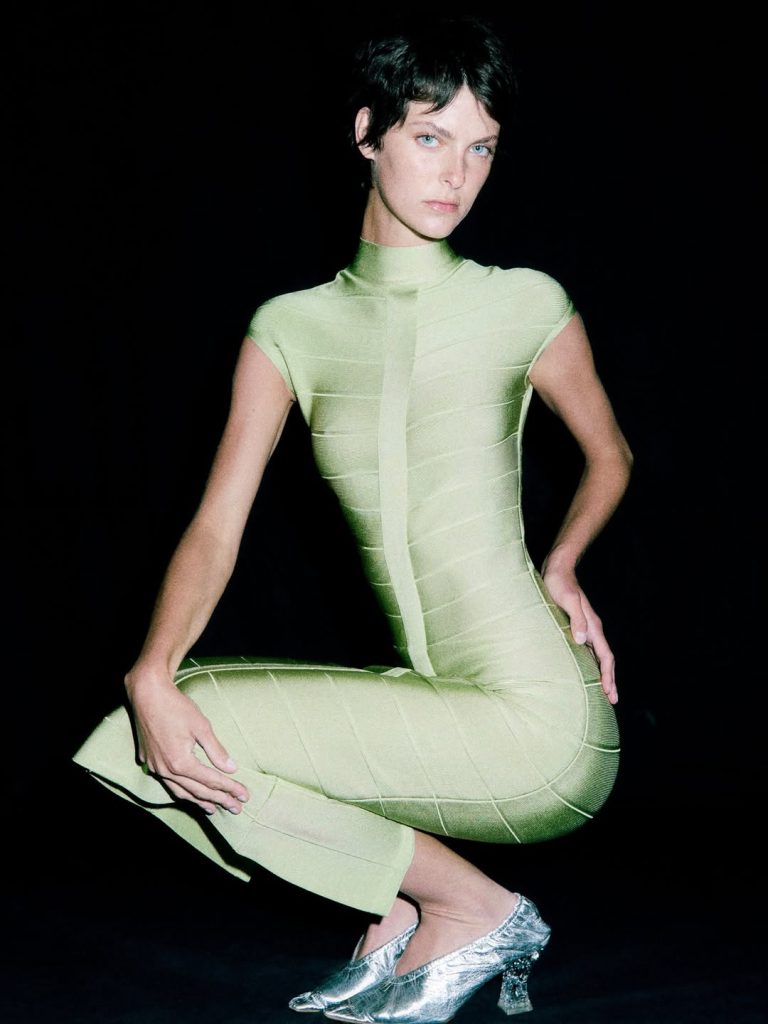A symbol of ultra-sexy femininity in the 2000s, Hervé Léger’s “bandage” dress is back on the fashion scene. But can this super-sexy piece truly be redefined and what does it reveal about our relationship with the body today?
Synonymous with sensuality, Hervé Léger’s bandage dress is quietly resurfacing on social media. Well-fitted and designed to sculpt the body, it once defined the style of 2010s “it-girls” from Kim Kardashian to Victoria Beckham to Rihanna, before fading into obscurity. Is a comeback really on the horizon? And more importantly, is it even desirable?
Back to the 2000s
In recent seasons, Y2K nostalgia has brought back some of fashion’s most controversial trends: low-rise jeans, rhinestones, micro tops…Within this revival, Hervé Léger’s bandage dress with its ultra-feminine, almost corset-like aesthetic is making a comeback, seen on TikTok and in select fashion campaigns.



Vietnamese label Fancí Club has taken inspiration for its summer collection, featuring micro-dresses and metallic corsets that highlight sharply defined silhouettes. In terms of celebrities, Hailey Bieber, Kaia Gerber, and Sabrina Carpenter have all recently brought this sculptural style back into the spotlight.


Since spring, Hervé Léger fever has been quietly rising on social media. French creators like @rosabonheur and @embtff are bringing their bandage dresses back from storage or hunting for second-hand pieces on Vinted. The comeback is noticeable but understated: Hervé Léger’s Y2K aesthetic is resurfacing in small touches, more of a nostalgic wink than a full-scale trend.
A piece put to the test of contemporary society
The bandage dress long embodied a fashion fantasy, designed to sculpt the body around heteronormative beauty ideals: a narrow waist, full hips, lifted bust, and flat stomach. A carefully measured vision of femininity, made to appeal to the male perspective, worlds apart from the genderless and deconstructed aesthetics that dominate fashion today.
This raises two pressing questions: Can the bandage dress be reclaimed as a tool of female empowerment, no longer about seduction, but about identity? Or does it remain a relic of a time when women’s bodies were confined by aesthetic straightjackets?
The irony of today is striking while Hervé Léger’s sculpted silhouettes may unsettle, society now celebrates Skims, Kim Kardashian’s shapewear brand, a more technical, and openly embraced, version of body-molding. Is compression deemed more acceptable when packaged as “inclusive”?
Revisiting without replicating: a possible path
The revival of Hervé Léger’s bandage dress is, above all, rooted in nostalgia. For Gen Z and Millennials too young, or simply unable to afford these pieces at the time, wearing the bandage dress today means checking a box, joining a club, or embodying a once-unattainable fantasy. It’s a tribute to pop culture idols and to a very sexy aesthetic, long celebrated on red carpets and in music videos.



Nostalgia is powerful, of course, but it also calls for reflection on what this dress represents. To truly renew the piece, it must be embraced by bodies and identities that were never the target back in the late 2000s. Other bodies need to claim it as their own, to avoid reinforcing the very same beauty diktats that were already deeply entrenched a decade ago.
In this sense, the Hervé Léger dress could find a second life, not as the sexy uniform of VIP parties, but as a critical object, a witness to a bygone era, and a lens for rethinking the body, gender, and power.
Its return to the fashion imagination does not imply a blind return to its original DNA. What makes its resurgence possible is critical distance: what it once embodied: an “ideal” feminine silhouette, sculpted to be desired is exactly what today’s designers and wearers are seeking to question. More than a revival, it’s a reinterpretation. And perhaps that is where the true value of its return lies.










